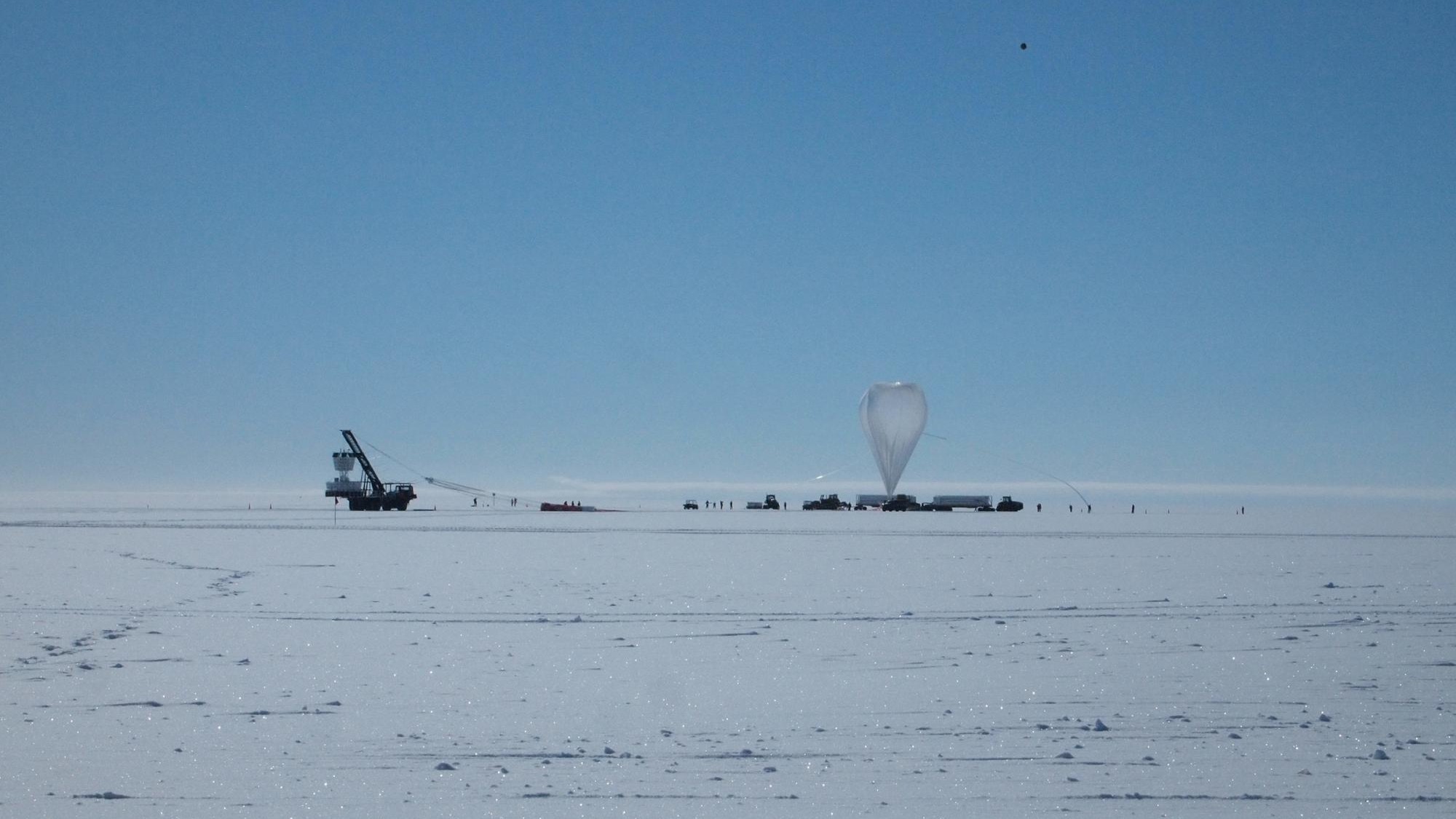Bizarre radio signals that defy physics detected under Antarctica: 'It's one of these long-standing mysteries'
Researchers detected mysterious radio waves in Antarctica that seem to defy the rules of particle physics. Now they're searching for a cause.

Instruments flying more than 18 miles (29 kilometers) above Antarctica detected two unexplainable radio pulses coming from below the ice — and these signals seem to defy particle physics.
Researchers determined the radio pulses came from angles around 30 degrees below Antarctica's surface, which the laws of physics theoretically prohibit. Calculations suggest the signals had to pass through thousands of miles of rock to get to the surface; however, scientists expect the pulses to be absorbed by the rock on this journey, rendering them undetectable.
The research team is now looking deeper into what could have caused the unexpected pulses. They ruled out some possible explanations using the Pierre Auger Observatory in Argentina and shared those findings in a study published March 27 in the journal Physical Review Letters.
"It's an interesting problem because we still don't actually have an explanation for what those anomalies are," Stephanie Wissel, a particle physicist and co-author of the study, said in a statement.
Excluding neutrinos
The mysterious pulses were first detected by the Antarctic Impulsive Transient Antenna (ANITA) experiment. ANITA comprises 24 radio antennas attached to a NASA balloon, located near the south pole to avoid signal interference.
Related: Antimatter detected on International Space Station could reveal new physics
The project was designed to capture data about neutrinos — subatomic particles that are especially difficult to study because they lack electric charge and have minimal mass. These elusive characteristics have earned them the nickname "ghost particles".
Get the world’s most fascinating discoveries delivered straight to your inbox.
But the confusing radio signals are "most likely not representing neutrinos," Wissel said. Existing models, she explained, predict that pulses caused by neutrinos would originate from angles very far from 30 degrees under the surface. The new study provides further evidence that neutrinos are probably not involved.
Using complex mathematical models and simulations, the research team also ruled out noise and known particle interactions as sources of the signals. They even examined data from other experiments to see if they observed any interaction that could cause the pulses, to no avail.
Since these observations can't be explained by the Standard Model, the theory that describes subatomic particles, the phenomenon responsible for these pulses could be key to unlocking new scientific understanding.
"More research needs to be done on this," Benjamin Flaggs, a physics graduate student at the University of Delaware and co-author of the study, told Live Science. "There are theorists proposing some beyond-standard-model interactions from different types of particles," he said.
Searching for the cause
If neutrinos aren't responsible for the radio signals, then what is?
Some theories suggest the signals are coming from dark matter — the invisible entity that makes up about 27% of the universe, but which remains poorly understood — Wissel said. But more data is needed before coming to any meaningful conclusion. Wissel favors the theory that the origin of these pulses may be explained by some as-of-yet unknown behavior of radio waves, but there's no evidence to support this guess, either. "So, right now, it's one of these long-standing mysteries," she said.
The Payload for Ultrahigh Energy Observations, a new balloon-based instrument, with advanced levels of sensitivity, is expected to help solve this puzzle by detecting more anomalies, thus providing more data to be scrutinized. "The more data we can get, the better we can get our statistical error," Flaggs said. The instrument will launch from Antarctica in December.
"We haven't discovered everything yet," Flaggs added. "It's exciting for researchers because these are problems that no one else has figured out before."

Perri Thaler is an intern at Live Science. Her beats include space, tech and the physical sciences, but she also enjoys digging into other topics, like renewable energy and climate change. Perri studied astronomy and economics at Cornell University before working in policy and tech at NASA, and then researching paleomagnetism at Harvard University. She's now working toward a master's degree in journalism at New York University and her work has appeared on ScienceLine, Space.com and Eos.
You must confirm your public display name before commenting
Please logout and then login again, you will then be prompted to enter your display name.


